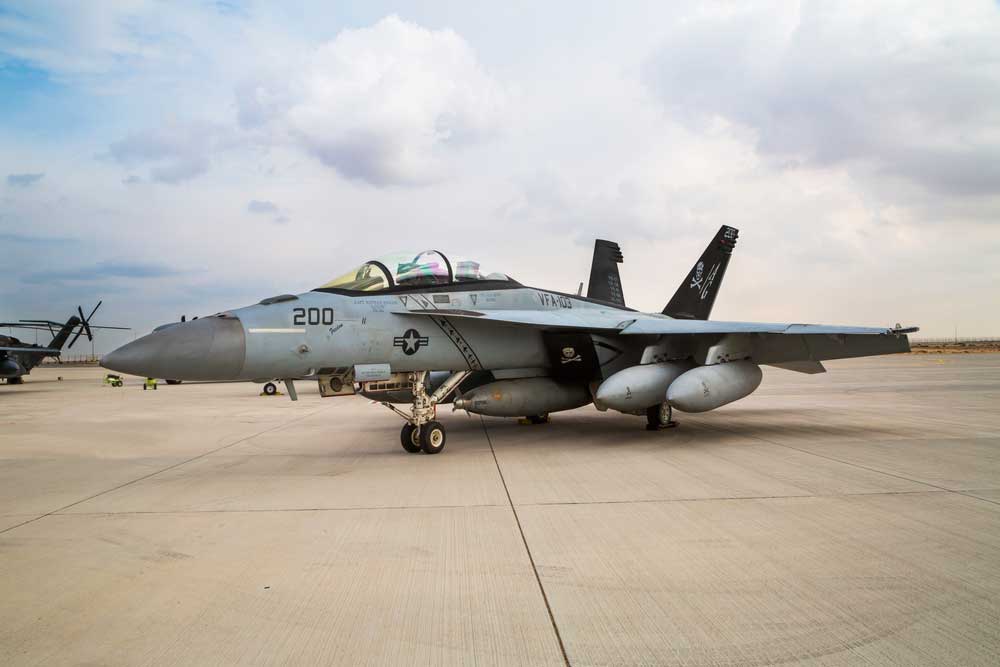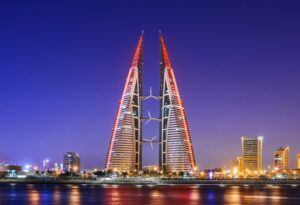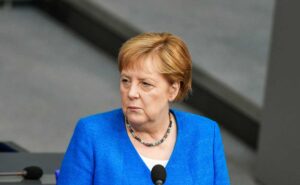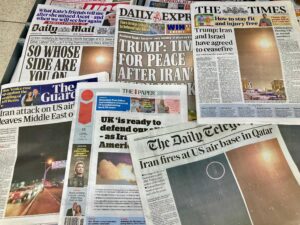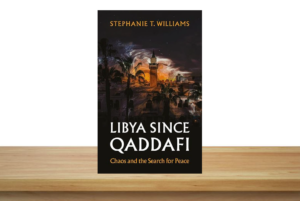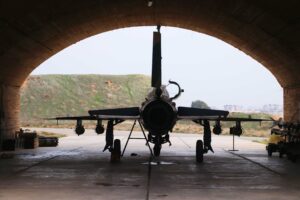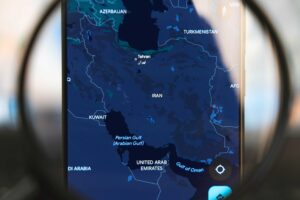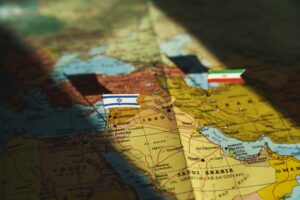This is the first piece in a multi-part series on Arab Gulf security.
The ruling dynasties of the Arab Gulf have survived for almost three centuries. Boundaries have shifted and instability has been episodic but largely contained within a manageable framework. Real change is largely superficial. The Arab Gulf essentially reflects its 18th century origins, a remarkable achievement. The confluence of British colonial and Arab dynastic interests coupled with the arrival of the United States accounts for this continuity. Prior to the 20th century, Gulf security was critical to the British India trade, the economic equivalent of oil today. Focused on survival, regional dynasties abetted British security policy or fell victim to it, and the British in turn protected dynasties from their neighbors who could become an “existential threat” overnight. At one time or another, each of the Arab Gulf states survived because of their bilateral relationship with a global Western Empire. Nothing has changed, and security alternatives are as ephemeral as a mirage in the Rub al-Khali. Understanding Arab Gulf security in the 21st century is a function of focusing on the present through the prism of the past and examining the future in the context of both – Oman, Kuwait, Qatar, the United Arab Emirates, and Bahrain are the focus.[i]
This inter-Arab wariness also extends to the Arab Gulf states themselves. The idea that the Gulf Cooperation Council (GCC) could morph into a “Gulf NATO” is naïve. The Obama and Trump administrations explored the concept, but it failed to even “get off the ground” because it flies in the face of dynastic self-interest and three centuries of Gulf rivalries.”[ii] The Gulf Arabs have more reason to distrust each other than they do Iran. In practical terms – what would an “Arab NATO” look like? Who would be in charge? Would the UAE, Oman, Qatar, or Kuwait acquiesce to Saudi control of their armed forces? Would the Kingdom take a backseat to one of the smaller states? Would Kuwait, Qatar, or Oman accept the stationing of Saudi or UAE troops on its territory? Not likely. Even small steps toward improved security and intelligence cooperation have been modest. As the late Sheikh Sultan bin Zayed Al Nahyan noted, “Undeniably, the member states held on to their cherished policies and only support the GCC, when it suited them.”[iii] Gulf security requires a powerful external ally that shares the strategic, if not dynastic, interests of the Arab States.
The Arab Gulf security relies on a series of tailored bilateral agreements with the United States, the “Hub”, as the ultimate guarantor of sovereignty and security.
Interests have driven the Arab Gulf and the U.S. into a “hub and spoke” security arrangement.[iv] The Arab Gulf security relies on a series of tailored bilateral agreements with the United States, the “Hub”, as the ultimate guarantor of sovereignty and security. In this arrangement, the GCC at times provides a structural façade, an overlay of the “hub and spoke” reality for politically sensitive military and policy coordination that merely overlays the “hub and spoke” reality.[v] In terms of bilateral relations, unique requirements and priorities emerge based on the security challenges of each state. As a result, security and policy need to fit the specific requirements of the particular state in question.
The Sultanate of Oman
Geopolitically, the Sultanate of Oman, with its position on the Straits of Hormuz – the global energy bottleneck – is critical to global Western security interests. In addition, its western border serves as a buffer for Oman, Arab Gulf, and Western interests against instability emanating from Yemen. In terms of diplomacy and policy, Oman provides a voice of reason in inter-Arab disputes opposing intervention Yemen, the Qatar embargo, and criticizing the treatment of the Shi’a in Bahrain. An authoritarian state, Muscat prefers cooption to suppression. Muscat also provides a conduit for communications with the Islamic Republic of Iran. Oman has played a unique role in multiple discreet Iranian-U.S. negotiations as well as providing a low-profile day-to-day connection. Muscat has issues with Tehran, but its historical relationship with Persia/Iran provides a unique diplomatic vantage point.[vi] Ruled by an Ibadi Sultan, Oman is removed from the ideological Sunni-Shi’a divide that effects Iranian relations with the other Arab Gulf states.[vii] This allows for a more business-like relationship with Iran that can be beneficial to the Arab Gulf and useful to the West.
Given its importance, what are Oman’s security and stability issues? Sultan Qaboos’ fifty-year reign created an authoritarian but stable state structure. The West needs that stability to continue. Qaboos’ successors now face multiple challenges including solidifying a new political regime while creating post-rentier oil economy as well as safeguarding against potential security threats, all of this in a multi-ethnic, multi-sectarian state. Lacking the petroleum wealth of its neighbors and having a significantly higher population in terms of actual citizens, the new government in Muscat needs investment and other forms of assistance to improve the economy and thus enhance stability and state security. The success of Qaboos’ rule in large part flowed from economic and development programs in Dhofar and the interior – cooption and those policies need the resources to continue. Given the strength of the security forces, there is little indication that unrest can threaten the state; however, in the long term, Oman, like the other states in the Gulf, needs to develop a post-rentier economy that is less dependent on the public sector for employment. Western support for the dual political and economic transition is critical, as is making it crystal clear that Sultanate has absolute U.S. security guarantees against foreign or domestic threats.
The State of Kuwait
At the other end of the Gulf, Kuwait is the ‘bookend’ of Gulf security. Having arrived as Nejdi transplants 250 years ago, the Al Sabah and Kuwaiti state identity have merged. The ruling family has assimilated into the fabric of the state by providing a stable contrast to Kuwait’s fractious, dysfunctional Majlis. The Al Sabah have also been a voice of moderation in inter-Arab disputes eschewing intervention in Bahrain, Yemen, and refusing to support the boycott of Qatar. With a population of approximately 1.3 million actual citizens roughly 30% of whom are Shi’a, Kuwait knows first-hand about small-state vulnerability. In 1990, in less than 24 hours, Kuwait ceased to exist, a situation that was only reversed by U.S. intervention. Memories of that trauma have dimmed on the street, but not among the ruling Al Sabah. The United States is now a full partner in guaranteeing Kuwait security and the Al Sabah dynasty, and as such a major asset in the Gulf security system.
From a geopolitical perspective, Kuwait now rivals Oman in strategic importance. The emirate hosts U.S. Central Command’s (USCENTCOM) forward command post and over 13,000 U.S. military personnel. Joint Kuwaiti-U.S. airbases and enough prepositioned equipment in Kuwait to support three brigades serve as a reminder to adversaries in the region of the potential consequences of a miscalculation.[viii] In addition, the U.S. provides advanced weaponry, training, and operational support to the Kuwait defense forces.[ix] Kuwait’s position as a major global oil producer only adds to its value as an ally and strategic partner. In the late 1950s, the British could not countenance the loss of Kuwait from the Gulf security system.[x] Nothing has changed in the 21st century – the preservation of Kuwait and the Al Sabah rule against foreign or domestic threats is the absolute priority for Gulf stability and U.S. interests.
The State of Qatar
Qatar’s strategic value is less obvious than that of Oman or Kuwait, perhaps because it has only 300,000 citizens or perhaps because its importance is largely self-made.[xi] At times aggravatingly independent, the Al Thani survived two centuries of repeated attempts to undermine them. They overcame threats from the Ottoman Empire, various Saudi states, the Al Khalifa and Al Nahyan, and internal threats from within the ruling family. They have not only survived but also prospered.[xii] Many predicted that the Al Thani would not survive the British withdrawal from the Gulf, but today, the Al Thani are the major basing option for U.S. forces mid-Gulf by building with the alternate command post for USCENTCOM, prepositioning facilities, and the critical al-Udeid airbase. Most importantly, the Qataris allow the U.S. virtually complete freedom of action from Al-Udeid. They are also a serious player in the diplomacy of the region and a critical link in the Western military posture in the Gulf.[xiii]
Qatar’s insistence on talking to everyone including those considered terrorist radicals, and its working relationship with Iran have created frictions.[xiv] Al-Jazeera has been a source of aggravation, and close relationships with Muslim Brotherhood and Erdogan’s Turkey raised concerns, but Qatari support to the U.S. military and to selected diplomatic initiatives proved too valuable. The Trump administration used Qatar to open negotiations with the Taliban. When questioned about Qatar’s relationship with Iran and other anti-western groups, a senior Qatari military stated, “Friends today may not be friends in the future – one cannot have too many friends.”[xv] This view proved prophetic when in 2017, Saudi Arabia, Bahrain, and the United Arab Emirates embargoed Qatar over a list of policy differences.[xvi] Following a U.S. warning, the invasion never materialized.[xvii] The embargo failed, and Qatar emerged from the test more independent than ever. Qatar faces two potential security issues – overreach in its openness with some that represent a potential threat and Al Thani fractiousness. In the Middle East, glancing over your shoulder is always a good idea.
The United Arab Emirates
The United Arab Emirates (UAE) and its de facto leader, Crown Prince Mohammed bin Zayed Al Nahyan, aspire to lead the Arab Gulf and be a full-fledged equal partner with the West. A federation of seven emirates with their own ruling families, sectarian preferences, and interests, the UAE is a 50-year-old experiment resulting from the commitment of Sheikh Zayed bin Sultan Al Nahyan (1918–2004). In the beginning, the difficulties – rivalries, boundary disputes, and other frictions – took a decade, Abu Dhabi’s wealth, the Iranian revolution, and Sheikh Zayed’s political skill to solidify a working union.[xviii] Issues remained; in 2005, one senior Gulf official complained, “Most of Iran’s nuclear centrifuges came through our brother emirates up the coast,” a situation that Abu Dhabi could not control.[xix] In 2008, the economic crash brought issues to a head. Facing economic collapse and needing a huge loan, Dubai and the other five emirates brought their political and security policies more or less in line with those of Abu Dhabi.[xx] Since 2008, the increased UAE unity has been a function of the federal government’s ability to use funding to coopt, or compel as the case may be, greater policy coordination and compliance from the six other emirates, enhancing its importance as a critical Western partner on the old Trucial littoral. The union continues to be a work in progress.
From a Gulf security perspective, Muhammad bin Zayed’s success in centralizing authority within the union was welcomed news, and it expanded the UAE vision of its role in the region. This ‘forward’ UAE foreign policy brought support for anti-Assad forces in Syria, police support for the Al Kahlifa against Shi’a uprising, intervention in Yemen to head off a Zaydi/Houthi takeover of the south, the intervention in Libya, and the intercession on disputes between Eritrea and Ethiopia. Its small population, only about 1.8 million actual citizens spread across seven emirates, results in small-footprint efforts backed by mercenaries and indigenous militias. While not conducive to ‘winning’ military campaigns, this practice is a force-multiplier and a practical means of creating stalemates leaving the UAE with the flexibility to extricate itself.
Yemen and Qatar are prime examples of this policy.[xxi] Quick to intervene in Yemen, the UAE showed the same alacrity in withdrawing its forces once a stalemate ensued. The UAE obsession with Qatar, the Al Thani, Al Jazeera reporting, and the Muslim Brotherhood (MB) relations resulted in the failed embargo. However, when participation in the Abraham Accords offered F-35 fighters and more security cooperation in return for a treaty with Israel and withdrawal from the Qatar embargo, the UAE took the deal. As a former Western diplomat who has negotiated directly with the Crown Prince, stated, “There is always a deal to be made.”[xxii] Whether or not these aggressive policies are worth the investment, the willingness of the UAE to aggressively engage sets it apart from the other Gulf emirates. Perhaps even more important is UAE flexibility – pragmatism is usually the guiding principle and a shield against concerns that UAE overreach could undermine stability at home.
The Kingdom of Bahrain
Bahrain, officially a kingdom since 2002, occupies the most controversial position within the Arab Gulf. Ruled by Persia for almost 200 years, Shi’a Islam is dominant. In the late 18th century, the Al Khalifa arrived from Kuwait following the Al Sabah emergence as the ruling dynasty there. The Al Khalifah migrated first to Zubarah and then displaced the dominant Shi’a Hawala Arabs tribe in Bahrain. In the 19th century, the Al Thani and the British forced them out of Zubarah leaving them in control of Bahrain. The Al Khalifa became a settler-conqueror minority dominating a Shi’a majority. Given this precarious position at various times, the Al Khalifa petitioned the British for support against the Al Saud, the Persian Shah for support against the British, and for Ottoman support against everyone. In 2011, Saudi and Emirati police and military units entered Bahrain to ensure Al Khalifa survival. To support a flagging economy, Saudi Arabia allows the Manama government to use the revenues from a Saudi offshore oil field.
Unfortunately, for human rights and democracy activists, the collapse of the Al Khalifa is not in the interests of Arab Gulf security, regional stability, or the West. Iranian bellicosity serves as a stark reminder that Persian imperial ambitions are very much alive. As a result, even the idea of any kind of Shi’a dominated state in Bahrain, with the neighboring concentration of Shi’a in the oil rich Eastern Province of Saudi Arabia, presents a nightmare security scenario. There is enough blame to go around – Al Khalifa internal policies, the British, the Saudis, Iranian policy, the West, or any number of other contributors – but given the current situation in the Gulf, there is no realistic alternative to the Al Khalifa. The presence of U.S. 5th Fleet headquarters at Manama and access to Isa Air Base are useful but not critical. Privately, senior U.S. officials have comments that finding alternatives for basing in Bahrain would be relatively simple.[xxiii] The U.S. presence is a show of support for Al Khalifa and a point of leverage to influence them – a U.S. withdrawal would be frightening to Bahrain and deeply disturbing to Saudi Arabia. The current situation is extremely difficult – the Shi’a have now been ruled by the Al Khalifa for two centuries as a conquered people and third-class citizens, but the security imperative is clear. The risks to the Arab Gulf and to Western strategic interests in the region are simply too great to attempt to push the Al Khalifa to make concessions that could spin out of control. Human rights and democracy advocates would likely find themselves quickly supplanted in any post-Al Khalifa regime by authoritarian or radical Islamists.[xxiv] Whether or not the situation can be ameliorated in the future, it does not change the Bahraini security and stability requirements.[xxv]
Conclusion
In 1971, the United States inherited an Arab Gulf security system that the British had constructed over the previous 250 years. It was a series of bilateral and some multi-lateral agreements that allowed the British to maintain the status quo. The U.S. believed that the Shah of Iran could be the “policeman of the Gulf” providing security in the wake of the British withdrawal – supporting the Sultan Qaboos in the Dhofar war was the test case. The idea of a Western surrogate like Iran protecting Western interests in the region was swept away by the Iranian Revolution, the Soviet invasion of Afghanistan, the siege of the Grand Mosque in Mecca, and the burning of the American Embassy in Islamabad. Reluctantly, Washington recognized that the U.S. had inherited the British responsibilities in the Gulf.
The details of how the current U.S. backed Gulf Security System (GSS) emerged are complicated, but suffice it to say that a combination of Iranian revolutionary bellicosity, Iraqi recklessness, and historical Gulf dynastic animosities convinced each of the Arab Gulf states to seek a bilateral agreement with the United States that offered protection against their enemies and erstwhile allies. The Gulf Cooperation Council (GCC) afforded little or no protection from anyone – so much for a NATO-like collective security. The current system is imperfect, but it has provided a shield behind which the Arab Gulf has maintained its stability and modernized. The real danger to Gulf stability lies in the participants themselves. For the Gulf Arabs, overreach and self-defeating internal rivalries are counterproductive. No matter how wealthy or how modern their militaries, they are still vulnerable to the larger states in the region. Most know that their security lies not in a collective arrangement with each other but in bilateral relations with the United States. Only through bilateral relations can the security assistance be tailored to fit their individual requirement and circumstance – each is different, and none can rely on each other. With too many rivalries and too much history, only the United States is capable of riding to the rescue.
On the other side of the issue is the United States. Talk of collective security that reduces the U.S. involvement in the region is utter nonsense. The list of vulnerabilities is long, and the ability of most of the Gulf states to resist would be numbered in days or even hours. Those U.S. analysts and officials that toy with the idea of indigenous collective security in the Gulf simply do not understand the context or the situation. Why would anyone want that — particularly when, most of the expense for the U.S. presence is borne by those being defended? Afghanistan will raise questions about U.S. commitments and resolve – the Arab Gulf is not Afghanistan. The Gulf is a critically strategic region with functioning governments and dynasties that have held their own, albeit in partnership with a Western ally, for almost 300 years. The U.S. and its allies in the Gulf need to focus on tailoring support to the needs of the individual and focus on maintenance of the flexible status quo come what may.
[i] Why exclude Saudi Arabia and to a lesser extent Iraq? The answer regarding Iraq is obvious. Geopolitically, Iraq’s location is more peripheral to the Gulf, and in fact, the historical Gulf security system, as often as not, functioned as a check against Iraqi expansionist ambitions whether Hashemite, Nationalist, or Saddamist. The exclusion of Saudi Arabia is a more complex issue. First and foremost, the Kingdom is fundamentally different in size and regional ambitions. The Gulf states often view it with understandable suspicion. Riyadh sees itself as the leader of the Arab Gulf. Given this self-image, it periodically attempts to demand policy compliance from the Arab Gulf. Since 1945, there have been multiple territorial and policy disputes between the Kingdom and the Gulf states, some of which have resulted in insurgencies, subversion, embargoes, or other forms of pressure to coerce compliance. As one senior Gulf military officer put it, “A friend and ally today can be a threat to security and stability tomorrow. Survival requires multiple options.” As often as not, Saudi Arabia is viewed as a ‘frenemy’ to be managed in contrast with Iran, which is viewed as an enemy to be confronted. Discussion with a senior Arab Gulf military officer on the topic of Gulf Security who was referring to both Iran and GCC allies, October 2006.
[ii] What of the Iranian threat? On paper, Iran poses an overt threat to the Arab states. In fact, since the 18th century, Iran’s only significant military involvement on the Arabian Peninsula has been military assistance to the Sultanate of Oman in putting down the Dhofar rebellion in the 1970s. Those forces were in fact withdrawn by the Islamic Republic after the fall of the Shah in 1979. In short, the Iranians (or Persians), first in confrontation with the British and later with the United States, showed a far better grasp of likely outcomes from an overt invasion or attack on the Arab Gulf than Saddam Hussein, a fellow Arab, did in 1990. This is not to say that Iran is incapable of some gross miscalculation, but rather to point out that to date, Iranian policy has shunned the potential consequences of a direct confrontation with the U.S. That said could an “Arab NATO” without U.S. support successfully deter a direct Iranian military threat? Highly unlikely. Chirine Mouchantaf, “What are the chances an ‘Arab NATO’ will work?” Defense News (29 August 2018): https://www.defensenews.com/global/mideast-africa/2018/08/29/what-are-the-chances-an-arab-nato-will-work/.
[iii] Sultan bin Zayed bin Sultan Al Nahyan, “The UAE Vision for Gulf Security,” in Iran, Iraq, and the Arab Gulf States, editor John A. Kechichian (New York: Palgrave, 2001): 386. As a contradictory after thought, Sultan bin Zayed added, “on major foreign policy questions, the GCC states agreed to preserve the alliance at all costs.” Since 2001, the first half of bin Zayed’s statement has proved prophetic, the second half – not so much. All the states have remained in the GCC, but policy unity has proven elusive.
[iv] Former senior Western diplomat with an intimate knowledge of Gulf affairs 2021.
[v] Noor Yousef Al Saleh, How Citizenship Informs Political Authority: The Case of Kuwait and Bahrain, Seattle, Washington: Dissertation University of Washington, Henry M. Jackson School of International Studies, 2018: 21. https://digital.lib.washington.edu/researchworks/bitstream/handle/1773/43252/AlSaleh _washington_0250E_19413.pdf?sequence=1&isAllowed=n.
[vi] The history of Omani-Persian relations with the Al Bu Said has been one of conflict and cooperation. In the late 18th century, the Al Bu Said came to power fighting the Persian occupation. In the 1970s, the Shah of Iran dispatched naval, air, and special forces units to assist the Sultanate in suppressing the Dhofar rebellion.
[vii] The Ibadi sect is Kharijite – the third major sect in Islam. As such, they view themselves as somewhat removed or above the sectarian disputes that drive the Sunni-Shia divide.
[viii] In addition, to the approximately six to eight thousand combat troops on ground with their aviation assets (this excludes air force combat capability), the prepositioned equipment can equip as many as 25,000 additional who can arrive in Kuwait within days. This combination is a real combat force capable of not only defending Kuwait but also capable of going on the offensive against any threats in the region. Rashaan Ayesh, “Where U.S. Troops and Military Assets are Deployed in the Middle East,” Axios (8 January 2020): https://www.axios.com/where-us-troops-deployed-middle-east-5e96fdb2-c7ba-4f26-90b4-7bf452f83847.html.
[ix] “U.S. Security Cooperation with Kuwait,” Fact Sheet – Bureau of Political-Military Affairs, U.S. Department of State (22 July 2021): https://www.state.gov/u-s-security-cooperation-with-kuwait-2/.
[x] “Policy in the Middle East, Shuckburgh to FO for distribution,” August 24, 1958, PRO, FO371/132545: 2. This is a 98-page document that lays out the strategic importance of Kuwait within the British Gulf system and British Gulf strategy following the collapse of the Hashemite monarchy in Baghdad. It is a fascinating read.
[xi] While the overall population of Qatar approaches three million, the actual number of Qatari citizens is only around 330,000. “Qatar Population and Expat Nationalities,” Online Qatar (26 August 2021): https://www.onlineqatar.com/visiting/tourist-information/qatar-population-and-expat-nationalities.
[xii] The history of the rise of the Al Thani and their emergence as the recognized rulers of Qatar is one of the more interesting dynastic stories in the Gulf. The Al Thani played the Saudis off against the Ottoman Empire and vice versa by converting to Wahhabi Islam then surviving the 1867-1868 war with Bahrain and Abu Dhabi to have the British extend formal recognition to the Al Thani as the rulers of Qatar. The 1867-68 war and its participants were virtually the same as those of the most recent embargo with some alterations but a similar result. Roby C Barrett, The Gulf and the Struggle for Hegemony: Arabs, Iranians, and the West in Conflict (Washington, D.C.: The Middle East Institute, 2016): 216–228.
[xiii] The air base at al-Udeid in the center of the peninsula is often referred to as Ramstein East and Qatar has given the U.S. almost total freedom of action from those facilities. Qatar also supports a Turkish armored brigade for “training” exercises as well as other Western allied military components.
[xiv] Ali Hashem, “Iran, Qatar recast regional ‘resistance’ alliance,” Al Monitor (17 March 2014): https://www. al-monitor.com/originals/2014/03/palestinian-iran-resistance-qatar-alliance-influence.html.
[xv] Conversation with a senior Qatari military officer 2010.
[xvi] For the UAE, the embargo was particularly awkward because Abu Dhabi had to continue paying for Qatari-Iranian gas that fueled UAE powerplants. As one expert commented, “When it comes to natural gas shipments, the United Arab Emirates needs Qatar more than Qatar needs the U.A.E “UAE needs Qatari gas to keep Dubai’s lights on,” Energy Voice (6 August 2017): https://www.energy voice.com/oiland gas/middle-east/141534/uae-needs-qatari-gas-keep-dubais-lights/.
[xvii] Whether it was an intimidation or a real invasion in the making, Qatari officials claimed that Rex Tillerson prevented a planned invasion of Qatar by Saudi and UAE forces. “Rex Tillerson stopped Saudi and UAE from ‘attacking’ Qatar,” Al Jazeera (1 August 2018): https://www.aljazeera.com/news/2018/8/1/rex-tillerson-stopped-saudi-and-uae-from-attacking-qatar.
[xviii] In a conversation with a former senior Emirati official, we discussed the Saudi incursion at Buraimi oasis in the early 1950s. His family was from the Al-Ayn area, and he stated that his father and grandfather had actually sided with the Saudis in the dispute talking about how smart the Saudis had been and how Abu Dhabi and the British had basically neglected the interior. When asked, “Why did they change sides?” The response was, “Sheikh Zayed was a great leader and a wonderful man.” This underscores the high esteem in which Sheikh Zayed was held and his critical role in founding the union. Conversation with former senior UAE official 2008.
[xix] Conversation with a senior Gulf official 2006.
[xx] The union emerged following the British withdrawal from the Gulf but the rivalry between Abu Dhabi and Dubai hindered the creation of a functioning state. As pointed out above, the Iranian revolution and Sheikh Zayed’s diplomacy resulted in a formal agreement on power sharing and government operations in the 1979–1980 time period. Thus, phase one of the UAE was 1971 to roughly 1980. The second phase was 1980 to 2008 when the financial crisis provided Abu Dhabi the leverage to bring security and trade issues more in line with its own practices. As one official put it, prior to 2008 the smuggling and other illicit practices among some of the emirates of the union accounted for much of the materials in Iran’s nuclear program. The third phase of union development runs from 2008 to the present driven by Abu Dhabi’s financial leverage. Barrett, The Gulf, 247–250.
[xxi] The intervention in Yemen was a prime example. The UAE focused on preventing a Ansar Allah takeover of the Sunni south through a modest military presence while providing just enough support to frustrate a military takeover by Zaydi revivalists. In this, they largely succeeded; however, their efforts to use surrogates and mercenaries to take control of the port of Hodeida and force the Zaydis to the negotiating table floundered. Mercenaries faced with the prospect of a vicious street battle with Ansar Allah baulked at the prospect of dying for dollars. The UAE simply lacked both the manpower and the willingness to take significant casualties and abandoned the effort. As a result, the UAE announced that it had shifted its military efforts away from anti-Zaydi operations and would focus instead on counterterrorism. Somewhat later, Abu Dhabi announced an end to Yemen military operations altogether and withdrew its remaining forces from southern Yemen. It continues to provide support to various groups, but no recognizable UAE military presence remains. Whether by design or the result of on-the-fly pragmatism, the UAE accomplished its major goal – preventing the subjugation of the south by the Zaydi north and managed to escape the open-ended quagmire into which its ally, Saudi Arabia, had fallen. At the same time, it maintained a much lower level of influence by its payments and material support to various Yemeni opposition groups as well as its continuing presence in the immediate region. Sheren Khalel, “UAE deeply involved in Yemen despite claims of withdrawal, experts say,” Middle East Eye (22 February 2021): https://www.middleeasteye .net/news/uae-yemen-conflict-deeply-involved-experts-say.
[xxii] Conversation with a former senior US official who has negotiated directly with Crown Prince Mohammed bin Zayed March 2021.
[xxiii] Conversation with a senior Western diplomat who was intimately familiar with political-military affairs and relations with Bahrain, November 2013.
[xxiv] Conversation with Marayam al-Khawaja Washington, D.C. 2013. It was pointed out to Ms. Khawaja that the likelihood that any pro-democracy movement would remain under the control of real democracy advocates, as opposed to anti-democratic, anti-western, opportunists who would rapidly highjack it, was slim to none. Well-meaning and articulate, her credibility has been enhanced by the less than sophisticated tactics of Bahraini internal security organizations and court system in dealing with activists and protesters. The Khawaja family has become a focal point for criticism of the Bahraini government. Abdulhadi al-Khawaja might be less of a problem if he were he freed from prison and permanently exiled as opposed to remaining in prison as the focal point for accusations of irregular legal procedures and torture. See “Bahrain: Immediately and Unconditionally release Abdulhadi al-Khawaja,” International Service for Human Rights (30 June 2021): https://ishr.ch/latest-updates/bahrain-immediately-and-unconditionally-release-abdulhadi-al-khawaja/.
[xxv] Some analysts claimed that King Hamid attempted a more conciliatory approach to the Shi’a protesters but was thwarted by a hardline faction centered around Prime Minister Kahlifa bin Salman Al Khalifa. Sometimes privately referred to in Western diplomatic circles as “Darth Vader”, Khalifa bin Salman was radically anti-Shi’a and the longest serving prime minister in world. He was supported by Ian Henderson, the long-time British-born Bahraini security chief, who had suppressed the Mau-Mau rebellion in Kenya. Henderson was the subject of a documentary entitled “The Butcher of Bahrain.” Henderson was removed over accusations that he created a security system in which former Jordanian and Saddamist Iraqi security officers (now in Bahraini pay), tortured Arab Spring activists in an attempt to quell protests, peaceful or otherwise. Henderson died in 2013 and Khalifa bin Salman in 2020.


